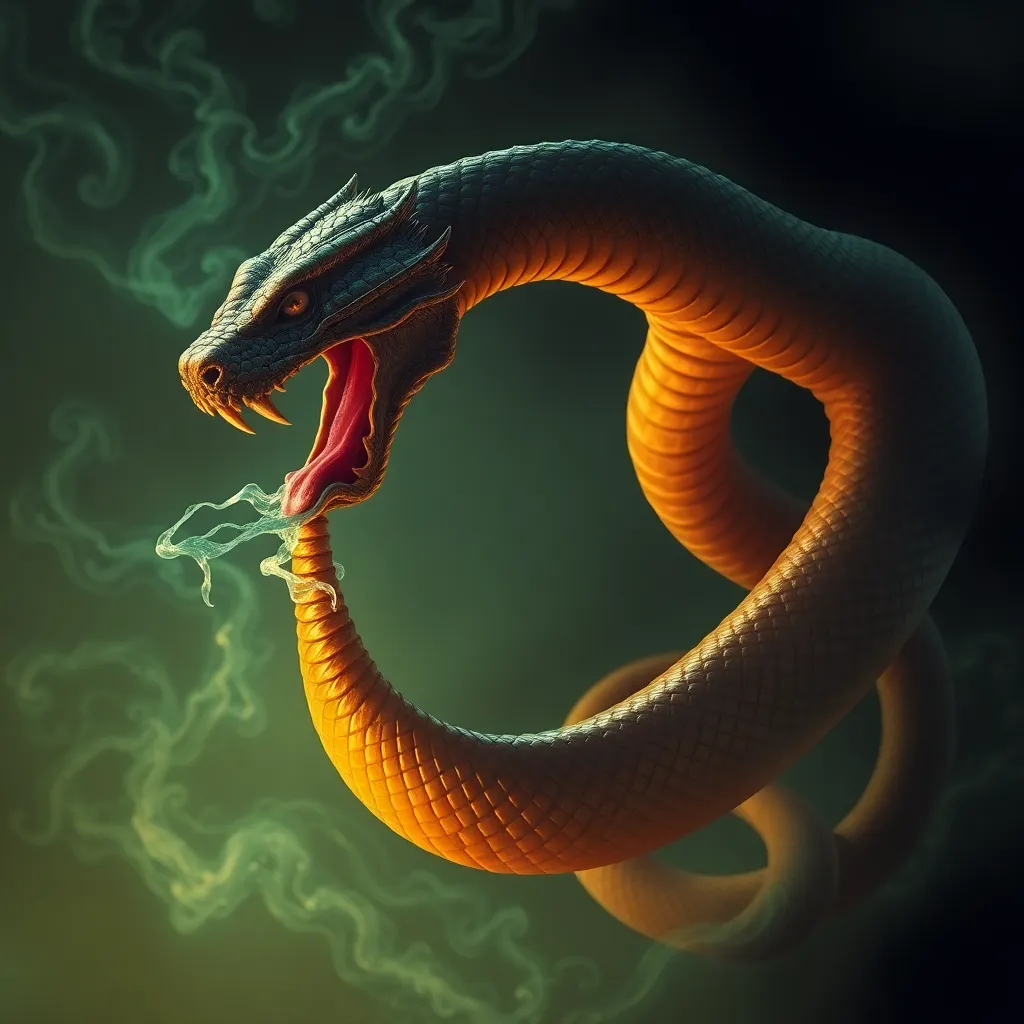The Serpent’s Bite: Exploring the Hydra’s Symbolism in Ancient Near Eastern Mythologies
I. Introduction
The Hydra, a legendary creature of immense significance, has captured the imaginations of cultures throughout history. Often depicted as a serpentine being with multiple heads, it symbolizes both chaos and regeneration. The importance of symbolism in ancient Near Eastern mythologies cannot be overstated, as these narratives offer profound insights into the values, fears, and aspirations of the societies that created them. This article aims to explore the multifaceted symbolism of the Hydra, examining its portrayals in ancient texts, its role in mythological narratives, and its enduring legacy.
II. The Hydra in Ancient Texts
The Hydra appears in various ancient myths, each presenting a unique aspect of this enigmatic creature.
- Greek Myths: The most famous depiction of the Hydra comes from Greek mythology, particularly in the tale of Heracles, who was tasked with slaying the beast as one of his Twelve Labors.
- Near Eastern Texts: While less documented, the Hydra’s presence in Near Eastern mythology can be inferred from various creation myths and stories, where similar serpent-like entities represent chaos and primordial forces.
Key ancient Near Eastern texts that feature the Hydra include:
- The Epic of Gilgamesh
- The Enuma Elish
- The Ugaritic texts
In comparing the Hydra’s portrayal across cultures, it becomes evident that while the creature is often seen as a formidable adversary, it also represents deeper themes of transformation and the struggle against chaos.
III. Symbolism of the Hydra: Chaos and Regeneration
The Hydra serves as a potent symbol of chaos in many creation myths.
- The creature often embodies the uncontrollable forces of nature, representing the chaotic elements that must be tamed for order to emerge.
- In the context of creation myths, the Hydra’s existence can be seen as a precursor to the formation of the world, where chaos must be confronted to achieve harmony.
This duality of destruction and regeneration is central to the Hydra’s symbolism. As each head of the Hydra is severed, two more grow in its place, illustrating the cyclical nature of life and death. This regenerative quality has profound implications for ancient societies:
- It reflects the resilience of communities in the face of adversity.
- It underscores the belief in renewal and the possibility of rebirth after destruction.
IV. The Hydra and the Concept of the Other
The Hydra can also be interpreted as a representation of the unknown or foreign elements within society.
- In ancient Near Eastern cultures, the “Other” often symbolized external threats or unfamiliar territories that needed to be confronted.
- The Hydra’s multiple heads can be seen as a metaphor for the many facets of the “Other,” embodying the fears and misconceptions that arise from cultural differences.
The Hydra’s role in narratives of conflict and conquest highlights its significance as a symbol of the struggle against the unknown. Heroes who confront the Hydra often represent the triumph of civilization over chaos, embodying the virtues of bravery and strength.
V. The Hydra in Relation to Deities
The interactions between the Hydra and various gods and goddesses in myths provide further depth to its symbolism.
- In Greek mythology, the Hydra is often associated with the goddess Hera, who sends it to challenge Heracles, illustrating the divine manipulation of mortal destinies.
- In Near Eastern mythologies, serpent deities like Tiamat in Babylonian myths share qualities with the Hydra, representing primordial chaos and the struggle against disorder.
The Hydra often serves as a test or challenge for heroes in mythological narratives, symbolizing the trials one must face to achieve greatness. The act of confronting the Hydra is not just a physical battle but also a rite of passage that signifies the hero’s growth and evolution.
VI. The Hydra’s Influence on Later Cultures
The legacy of the Hydra extends far beyond ancient Near Eastern mythologies, influencing Greek and Roman cultures significantly.
- In Greek mythology, the Hydra’s story has become synonymous with the theme of perpetual struggle against insurmountable odds.
- Later adaptations in art and literature often reinterpret the Hydra as a symbol of various societal fears, such as war, disease, or moral decay.
Contemporary contexts continue to draw upon the enduring symbolism of the Hydra, with references appearing in modern literature, films, and visual arts. Its representation as a creature that adapts and thrives in chaos resonates with contemporary audiences grappling with the complexities of modern life.
VII. Comparative Analysis: The Hydra and Other Serpent Myths
When examining the Hydra in relation to other serpent-like creatures across world mythologies, several similarities and unique aspects emerge.
- Similarities: Many cultures feature serpents as symbols of chaos and destruction, often associated with creation myths.
- Unique Aspects: The Hydra’s regenerative qualities set it apart, as it embodies the duality of destruction and renewal more explicitly than many other serpent myths.
This comparative analysis highlights the role of serpents in humanity’s collective unconscious, serving as archetypes that evoke universal themes of fear, transformation, and the unknown.
VIII. Conclusion
In summary, the Hydra’s multifaceted symbolism in ancient Near Eastern mythologies encapsulates the complexities of chaos and regeneration. As a powerful representation of the struggle against the unknown and the forces of nature, the Hydra continues to resonate with modern audiences. The exploration of these myths provides valuable insights into the cultural identities of ancient societies and encourages a deeper understanding of our own narratives surrounding chaos and order. Further exploration of the interplay between mythology and cultural identity remains essential in appreciating the rich tapestry of human experience.



